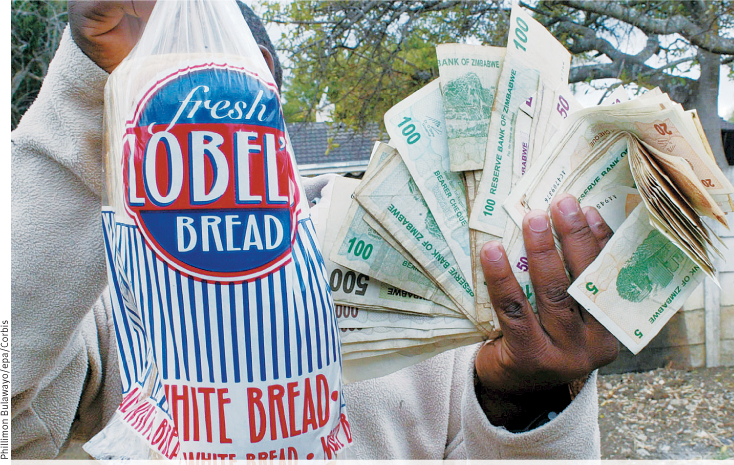Inflation, Disinflation, and Deflation
16
Why efforts to collect an inflation tax by printing money can lead to high rates of inflation and hyperinflation
What the Phillips curve is and how it describes the short-
run trade- off between inflation and unemployment Why there is no long-
run trade- off between inflation and unemployment Why expansionary policies are limited due to the effects of expected inflation
Why even moderate levels of inflation can be hard to end
Why deflation is a problem for economic policy and leads policy-
makers to prefer a low but positive inflation rate Why the nominal interest rate cannot go below the zero bound and the danger a liquidity trap poses
BRINGING A SUITCASE TO THE BANK


IN 2008, THE AFRICAN NATION OF Zimbabwe achieved a dubious distinction: it exhibited one of the highest inflation rates ever recorded, peaking at around 500 billion percent. Although the government kept introducing ever-
Zimbabwe’s experience was shocking, but not unprecedented. In 1994 the inflation rate in Armenia hit 27 000%. In 1991 Nicaraguan inflation exceeded 60 000%. And Zimbabwe’s experience was more or less matched by history’s most famous example of extreme inflation, which took place in Germany in 1922–1923. Toward the end of the German hyperinflation, prices were rising 16% a day, which—
Canada has never experienced that kind of inflation. Canada’s worst inflation in the past 60 years occurred in the early 1980s, reaching, at its highest peak, an annual rate of almost 13% in 1981. Yet even that rate of inflation was profoundly troubling to the Canadian public, and the policies the Bank of Canada pursued to get Canada’s inflation back down to an acceptable rate contributed to the deepest recession since the Great Depression.
What causes inflation to rise and fall? In this chapter, we’ll look at the underlying reasons for inflation. We’ll see that the underlying causes of very high inflation, the type of inflation suffered by Zimbabwe, are quite different from the causes of more moderate inflation. We’ll also learn why disinflation, a reduction in the inflation rate, is often very difficult. Finally, we’ll discuss the special problems associated with a falling price level, or deflation. 